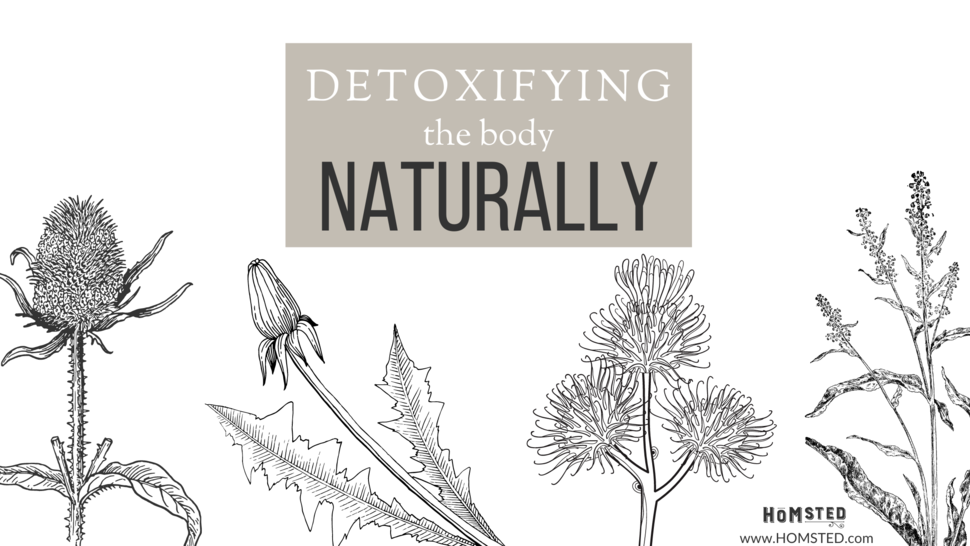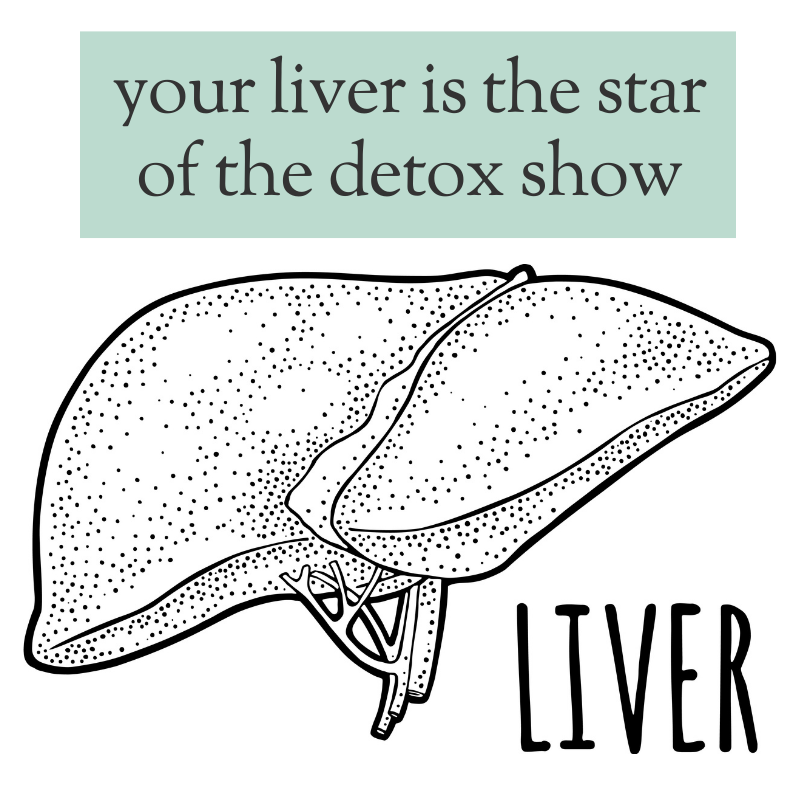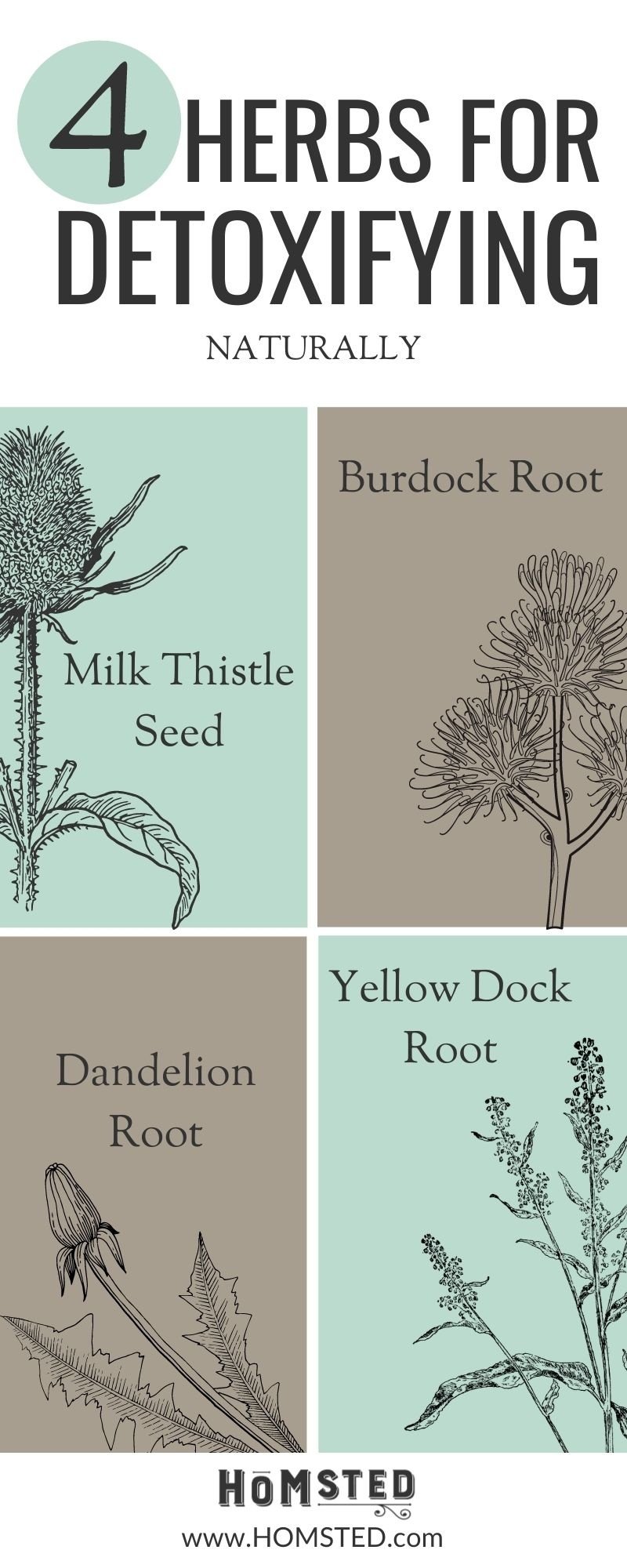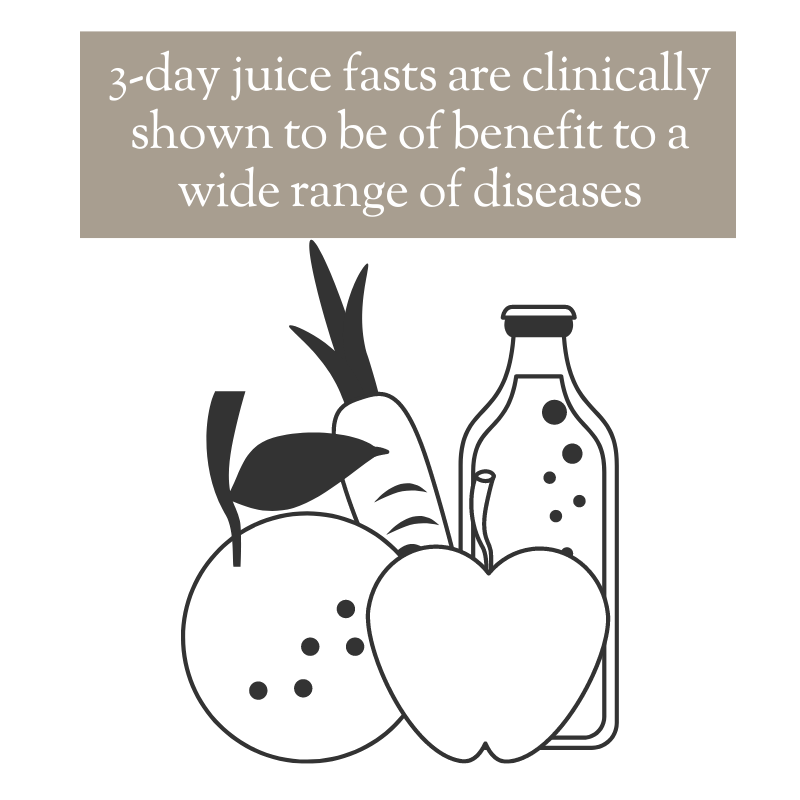Detoxifying the Body Naturally

There is no time for fresh starts like the new year, and what is a better way to get off to a fresh start than a detox? But what does ‘detox’ actually mean? I mean, what actually is happening in the body and why would I want to do it?
The human body is in a constant state of rebuilding. Cells constantly die and new ones take their place. Toxins inevitably make their way into our bodies. Some toxins are even produced by our bodies during a variety of processes. Other toxins are produced by the billions of bacteria that we coexist with. But don’t be worried! Our bodies have evolved effective and elegant processes for dealing with these toxins. While some people may need deeper detoxes in certain circumstances, generally the body has very effective detox mechanisms already built in. What generally causes problems is when we interfere with those natural detox mechanisms. Medications, excessive alcohol consumption, food and skincare additives, and excessive exposure to environmental toxins are just some of the many ways that we can overload our natural detox mechanisms. Your liver can keep quite busy enough clearing away cyto-toxins from natural gut bacteria; it doesn’t need the additional load from the numerous toxins you absorb from, say, burning paraffin candles regularly.
The bottom line is that your body has brillant detox mechanisms already in place. The best thing you can do is stop adding additional load to the system so that it can do a ‘deep clean’ of the body every once in a while. You should also support and stimulate (without further loading of) those detox mechanisms, which is where herbs and supplements come in.
The benefits of a good detox can be numerous: better sleep, better immune health, better digestive health, better anxiety responses, better skin and hair health, more energy, etc. Truly, the list is substantial. But you already know a detox is a good idea and that you might need one. Let’s discuss, in a little more detail, what a toxin is, how the body copes with toxins, and what you can do to support those processes.
Everyone says to eliminate toxins. So what exactly is a toxin?
A toxin is any compound that has a detrimental effect on cellular function. Some would define toxins and such harmful compounds produced by living organisms (biotoxins). Plants produce poisonous compounds (i.e. phytotoxins, like coniine in poison hemlock). Bacteria produce toxins (i.e.).
Common types of Toxins include:
- Heavy Metals: common heavy metals include aluminum, arsenic, cadmium, lead, mercury, and nickel. They typically accumulate in the brain, kidneys, liver, and fatty tissues. 1,2,3
- Persistent organic pollutants: Includes: drugs, pharmaceuticals, solvents, formaldehyde, alcohol, pesticides, herbicides, and food additives. Typically, they are active upon the nervous system and also interfere with the endocrine system (think hormones).
- Microbial Compounds: Many bacteria produce toxins. Some, your body deals well with. Others can be detrimental. For example, botulinum is a chemical excreted by the bacteria Clostridium tetani and causes tetanus. You have about 3 pounds of bacteria living in your gut. Those bacteria (and yeasts), when not in proper balance, can produce toxic waste products. Antibodies created in response to these toxins can lead to autoimmune reactions. Such circumstances have been linked to rheumatoid arthritis, diabetes, and autoimmune thyroiditis. Incorporation of fiber load in the diet is important in binding and flushing these toxins from the gut.
- Protein Synthesis Byproducts: The breakdown of proteins can lead to high levels of toxins (e.g. ammonia, urea). The kidneys are largely responsible for elimination of these toxins. Proper water intake is critical as buildup of these toxins can cause numerous health issues (e.g. gout is caused by excessive uric acid in joints).
So now that we have determined what a toxin is, how does the body work at trying to eliminate these?
The body typically binds toxins with other chemicals and then tries to eliminate them primarily through urination, as feces, and secondarily through the skin, lungs, and hair.
What does the liver have to do with it?

Your liver is the star of the detox show. Among the numerous tasks that your liver performs, it also detoxifies your body by ‘filtering’ blood and removing toxins by means of enzymatic reactions. That is, it uses a huge array of chemicals to neutralize and bind toxins into chemical packages that are more easily excreted into the intestines via bile.
The liver chemically eliminates through two major pathways:
Phase 1
- The first line of defense, which consists of a enzyme called Cytochrome P450. This enzyme basically converts toxins into less harmful ones.
- Although they are less harmful they can still build up if not properly eliminated.
- Every Phase 1 reaction generates a free radical which can damage liver cells in the absence of appropriate antioxidants – the most important antioxidant for such reactions is glutathione- so eat your veggies!
- P450 enzymes require a wide range of nutrients. This is one reason why nutritional support is key to healthy detox protocols!
Phase 2
- In this phase the liver makes the toxins water soluble so it can be released out of the body.
- The balance of Phase one and Phase two systems is critical to good health. Large degrees of natural variability occur, so take this into account when choosing foods , medications, and supplements.
- Importance of Bile and Fiber
- Transports congregated toxins to the intestine
- Gallstones and Cholestasis can decrease bile flow
- Bile bonds with fiber and is eliminated.
Tip: without proper fiber intake, reabsorption rates can easily be as high as 99%
So now that you know what a toxin is and how your body generally detoxifies, what can you do to help it out?
Fortunately, avoiding toxins altogether is not the only way to prevent toxic damage- WHEW!! Efficient elimination can be achieved through good diet, nutrient supplements, and herbal medicine.
Our approach to detoxification is based upon the premise that the human body is self-healing and homeostatic and that one should seek to support normal processes. We believe one should also seek to support ALL aspects of the detoxification process.
When would I detoxify?
Talking with your doctor would be a good idea if you are experiencing any of these issues but some signs of toxicity include:
- Constipation
- Fatigue
- Depression or mood swings
- Gas
- Skin problems such as eczema or acne
- Low immune function
What you can do daily:
- Decrease your exposure to toxins (this includes overuse of caffeine and alcohol).
- Eat a diet that focuses on fresh vegetables and fruits, whole grains, and reasonable meat intake. Drink plenty of water!!!
- Take a high-quality multivitamin and/or a nutritive tea and plenty of vitamin C (rose hips or an antioxidant rich tea).
What you can do periodically:
- Use our top 4 herbs to protect and enhance liver function.

- Milk thistle seed: this essential detoxing herb increases production of glutathione peroxidase (an antioxidant) that protects and repairs liver tissues. Think of glutathione as the ‘engine oil’ of your liver.
- Dandelion root: this bitter herb encourages the kidney and liver to release toxins. This root is rich in vitamin A which is important for liver function.
- Burdock root: is known as a blood purifier or cleanser and has a positive effect against toxic chemicals.
- Yellow dock root: a blood purifier and cleanser. We like to use this herb for skin problems, which are usually a sign the body is trying to eliminate toxins through the skin.
Tip: Don’t want to mix your own blend? Try this Detox tea. Check out how to brew a decoction tea here. Or if you prefer the ease of tinctures check out this tincture.
- Go on a 3-day juice fast and nutritional cleanse 3-4 times a year.

-
- Clinically shown to be of benefit to a wide range of diseases.
- Use caution when fasting. Consult a doctor, particularly if you have chronic conditions related to glucose imbalances or particularly high toxic load.
- Three-day juice fasts are a relatively safe and gentle way to detox. Longer fasts require supervision at appropriate facilities.
- For juice fasts, consume three or four 8-12 fl oz juice meals per day. Stay away from lots of fruit as the high sugar levels can cause widely fluctuating blood sugar levels.
- On the first and last day of the fast, prepare the body with a fresh fruit and vegetable diet.
- Rest!
Plan for a nap during juice fast days. Remember, the body only heals when relaxed.
Avoid vigorous exercise, but plan on short walks, stretching, or restorative yoga.
-
- Supplemental Treatments
- Lymphatic massage, tinctures , or dry brushing with grapefruit essential oil (awesome lymphatic mover) can be very beneficial supplementary treatments to expedite the removal of various toxins.
- Epsom baths are great at expediting the removal of toxin through the skin and removing lactic acid.
- Alkaline broths or drinking nettle tea, is a nutritive way to restore proper pH balance from diets that rely heavily on acid-forming foods.
- Supplemental Treatments
NOTE: This information is for educational purposes only and is not meant to supersede the recommendations of your doctor. Detoxifications, as outlined here, may not be appropriate for everyone. We recommend consulting with your doctor before starting a detox program.




